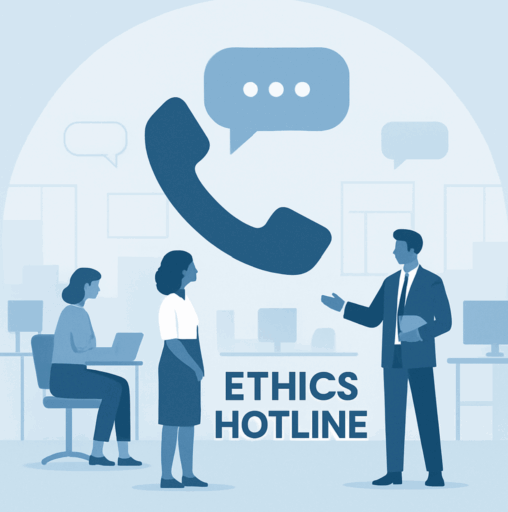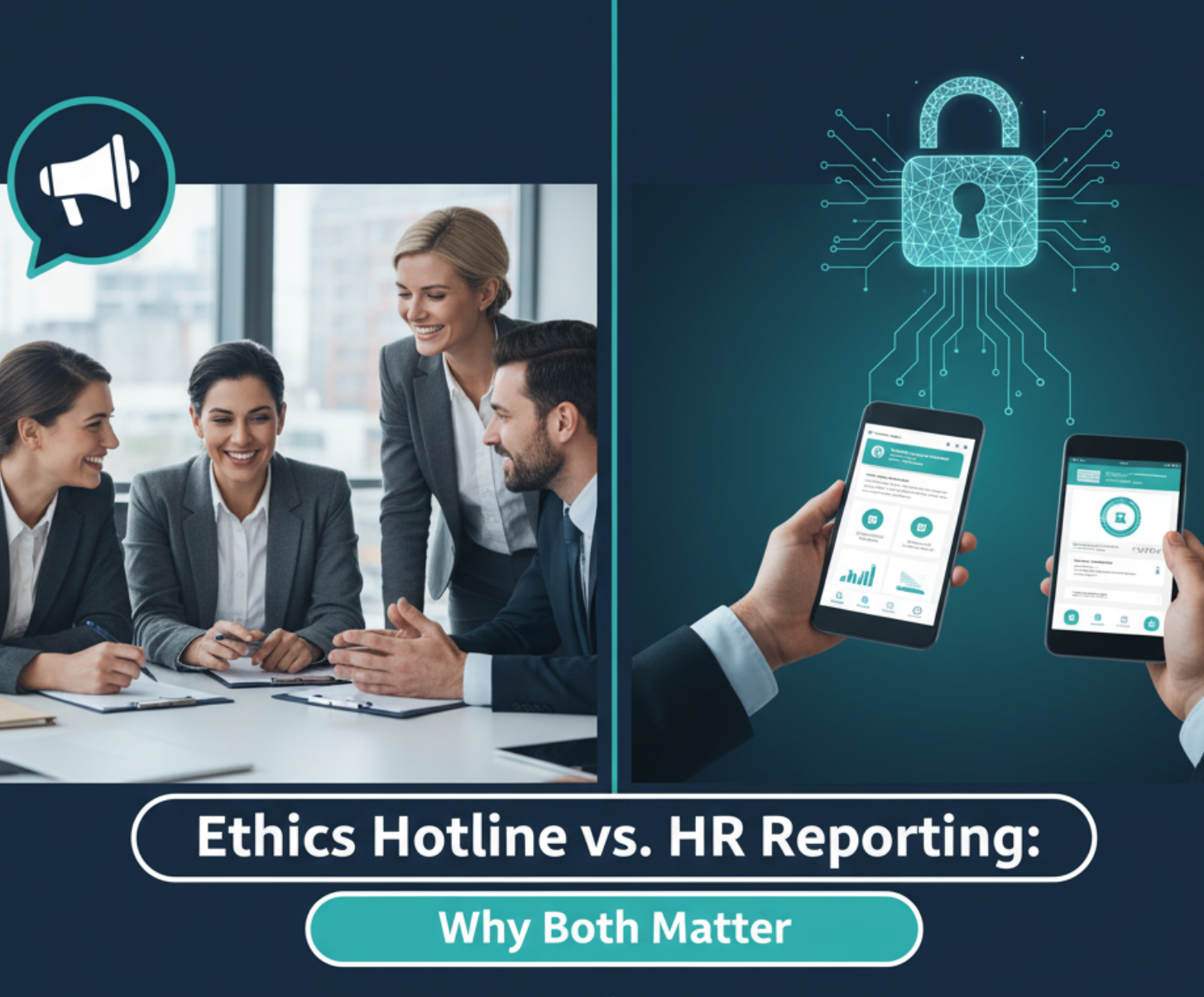
Ethical workplaces don’t happen by accident—they’re built on intentional systems, consistent leadership behavior, and mechanisms that empower employees to speak up without fear. Among those mechanisms, an independent hotline is one of the most powerful, practical tools for bridging the gap between policy and practice. Below are the top five indicators of an ethical workplace and how a well-designed hotline—supported by a trusted hotline service provider—helps bring each one to life.
1) Leadership sets the tone—and is held accountable
The clearest signal of an ethical culture is leadership that models integrity and invites scrutiny. When leaders consistently demonstrate transparency in decision-making and accept accountability for mistakes, ethical expectations become the norm rather than the exception. A hotline reinforces this standard by providing a confidential channel for employees to raise concerns about any level of the organization, including leadership. A credible hotline service provider strengthens that accountability by ensuring impartial intake, standardized categorization, and prompt escalation—so concerns about high-stakes misconduct don’t get buried, delayed, or filtered through internal politics.
2) Employees are empowered to speak up without fear
Psychological safety is a leading indicator of ethical health: employees must believe they can report concerns anonymously, without retaliation, and that their concerns will be taken seriously. The right hotline service provider is central to this empowerment. It enables multiple reporting channels (phone, web, mobile), supports anonymity where legal, and offers trained, neutral operators who know how to elicit details respectfully and accurately. Importantly, a hotline backed by a professional hotline service provider provides clear case numbers, status updates, and a secure two-way dialogue—critical features that build trust and encourage employees to report early, before issues escalate into legal or reputational crises.
3) Policies are clear, accessible, and consistently enforced
Ethics policies only matter if they’re understood and applied evenly. An ethical organization publishes clear code-of-conduct expectations, trains regularly, and enforces policies consistently across roles and regions. A hotline enhances that consistency in three ways:
- It captures real-world scenarios that reveal where policies are confusing or unevenly applied.
- It provides a defensible, time-stamped record of intake, triage, and response.
- It triggers standardized workflows that reduce subjective handling of similar allegations.
Partnering with a hotline service provider ensures these processes are documented, auditable, and aligned with regulatory expectations, helping compliance leaders spot gaps and refine training based on actual patterns.
4) Ethical hiring and promotion practices
An ethical workplace begins with who gets hired, developed, and promoted. Organizations that screen for values alignment, reinforce ethics during onboarding, and evaluate leaders on how they achieve results—not just what they achieve—tend to sustain healthier cultures. Incorporating behavior-based interviews, reference checks that probe integrity, and promotion criteria that include ethical leadership sends a powerful signal. A hotline complements these efforts by surfacing patterns tied to specific teams or managers—such as favoritism, pressure to bend rules, or conflicts of interest. With analytics from a capable hotline service provider, HR and compliance can map reports to talent processes, identify risk-prone pockets, and take corrective action in hiring, coaching, or leadership selection before cultural damage spreads.
5) Retaliation is prevented, monitored, and addressed
Retaliation fear is the ultimate culture killer. Ethical organizations don’t just prohibit retaliation; they actively monitor for it and respond decisively when it occurs. A hotline helps in two practical ways:
- It offers confidential follow-up, so reporters can safely flag retaliation attempts.
- It supports time-based check-ins to detect changes in a reporter’s work environment after a complaint.
By proactively safeguarding against retaliation, organizations reinforce a culture where speaking up is not only safe but strongly supported.”
Embedding the hotline into daily operations
A hotline delivers the most value when it’s woven into everyday routines. Integrate reporting reminders into onboarding, annual training, and team meetings. Reference the hotline in policy acknowledgments, vendor codes of conduct, and incident response playbooks. Ensure managers know how to respond to concerns, when to avoid investigating on their own, and how to direct employees to the hotline without judgment. Coordinate closely with HR, Legal, and Internal Audit so intake, triage, and investigations are coordinated rather than siloed. Finally, close the loop: share anonymized learnings and actions taken so employees see that speaking up leads to real change.
The bottom line – Using a Hotline Service Provider is Essential
Ethical workplaces are defined by actions, not slogans. Leadership accountability, psychological safety, consistent enforcement, ethical talent practices, and active anti-retaliation measures are hallmarks of a healthy culture. A well-implemented hotline, supported by a credible hotline service provider, operationalizes those values—transforming ethical aspirations into measurable behaviors and better outcomes. For organizations serious about culture, compliance, and performance, investing in the right hotline service provider is not just prudent risk management; it’s a strategic advantage.
Learn key considerations in selecting a hotline here.
See what the Harvard Business Review has to say here.
Reach Us
Red Flag Reporting
P.O. Box 4230, Akron, Ohio 44321
Tel: 877-676-6551
Fax: 330-572-8146



